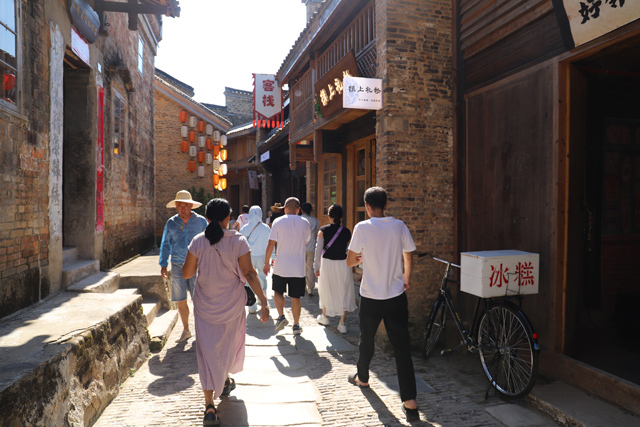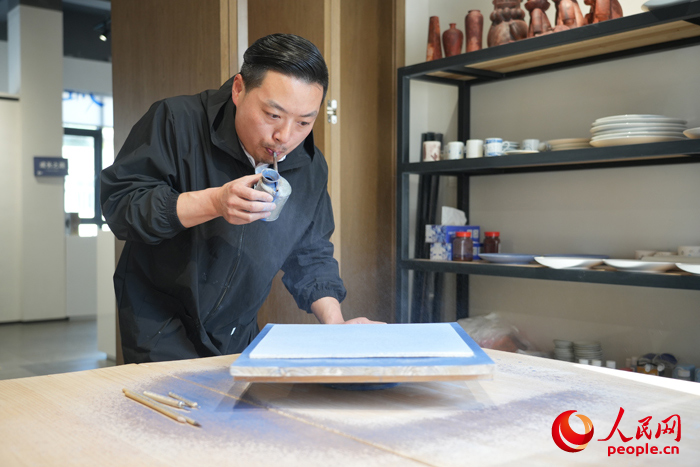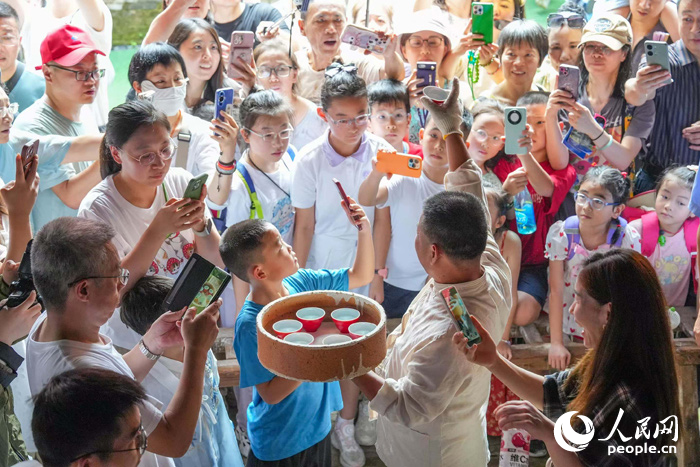




- BRNN
- BRI News
- BRNN News
- Database
Official Documents Polices and Regulations
Inter-government Documents International Cooperation BRI Countries
Business Guide Economic Data BRI Data
Trade
Investment Projects Latest projects
Cases - Content Pool
Jingdezhen city in east China's Jiangxi Province, known for its ancient kiln sites, historic alleys and streets, and rich intangible cultural heritage, has taken an integrated approach to protection and development, revitalizing its cultural legacy.
Xu Hailin, a native at Qing Street, which is a part of the Sanlyumiao Historical and Cultural Block, in Xinfeng subdistrict, Changjiang district of the city, recalled that in the past, old and shabby houses lined the street. Nowadays, they've been renovated with their original appearance retained.

Photo shows an aerial view of Changjiang district, Jingdezhen city, east China's Jiangxi Province. (Photo courtesy of Jingdezhen)

Citizens and tourists go sightseeing at the Sanlyumiao Historical and Cultural Block, Xinfeng subdistrict, Changjiang district, Jingdezhen city, east China's Jiangxi Province. (Photo/Wang Xiaoxuan)
In late 2024, the local government initiated a project to renovate and upgrade the Sanlyumiao Historical and Cultural Block. To date, six important ancient buildings and 54 buildings of similar styles have been renovated.
In a local ceramic studio, Zhang Chen, a representative inheritor of the blue-splashed glaze technique, an intangible cultural heritage, demonstrates the traditional craft of blue-splashed and incised decoration to a group of foreign artists.

Zhang Chen works on a piece of blue-splashed glaze and incised porcelain work at his workshop in Jingdezhen, east China's Jiangxi Province. (People's Daily Online/Kong Wenjin)
The blue-splashed glaze technique originated during the reign of Emperor Xuande of the Ming Dynasty (1368-1644). First developed at Jingdezhen's Imperial Kiln Factory, it was a monochrome glaze reserved for royal use. The craft reached full maturity during the Qing Dynasty (1644-1911), and most surviving examples of blue-splashed porcelain date from that era.
Inspired by his mentor in 2016, Zhang began integrating his artistic strengths with ancient techniques. He developed a unique glaze formula, merging the blue-splashed glaze of the Ming Dynasty with the incised decoration from the Song Dynasty (960-1279).
"The incised patterns are fired at over 1,300 degrees Celsius for 12 hours and then cooled for another 12 hours. During this process, the light blue clay transforms into a brilliant sapphire blue," he explained.

Photo shows a piece of blue-splashed glaze porcelain work. (Photo courtesy of the interviewee)
Today, blue-splashed glaze and incised works generally fall into two categories. Some are collectible art pieces for display, while others are designed for everyday use, such as teapots, lidded bowls, teacups, and tea canisters, Zhang said.
Jingdezhen is home to many artisans like Zhang. According to the intangible cultural heritage research and protection center of Jingdezhen, the city is now home to 3,248 officially recognized inheritors of intangible cultural heritage at or above the municipal level. This is the largest number in China in the field of ceramic craftsmanship.

Tourists pose for a picture at the re-ignition ceremony for an ancient kiln in Jingdezhen, east China's Jiangxi Province. (People's Daily Online/Kong Wenjin)
In recent years, Jingdezhen has made efforts to revive its ancient kilns. Walking through an ancient kiln folk expo area, visitors encounter a landscape of restored kilns from different dynasties, which are arranged like a living scroll of porcelain history.
"In recent years, we've restored and re-fired 13 representative kilns from different dynasties," said Zhou Ronglin, director of a local research institue on the ancient kiln culture.

Tel:86-10-65363107, 86-10-65368220, 86-10-65363106